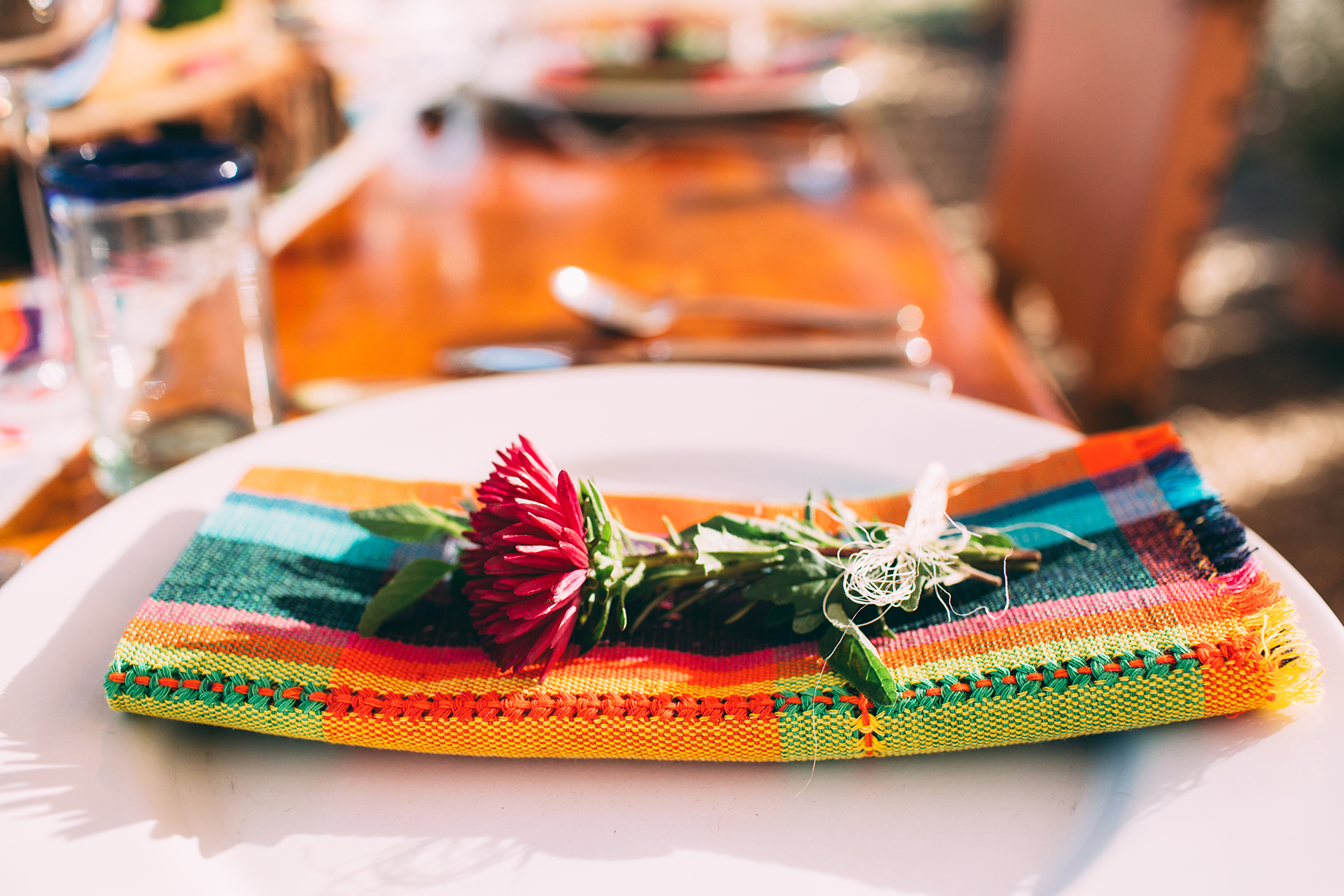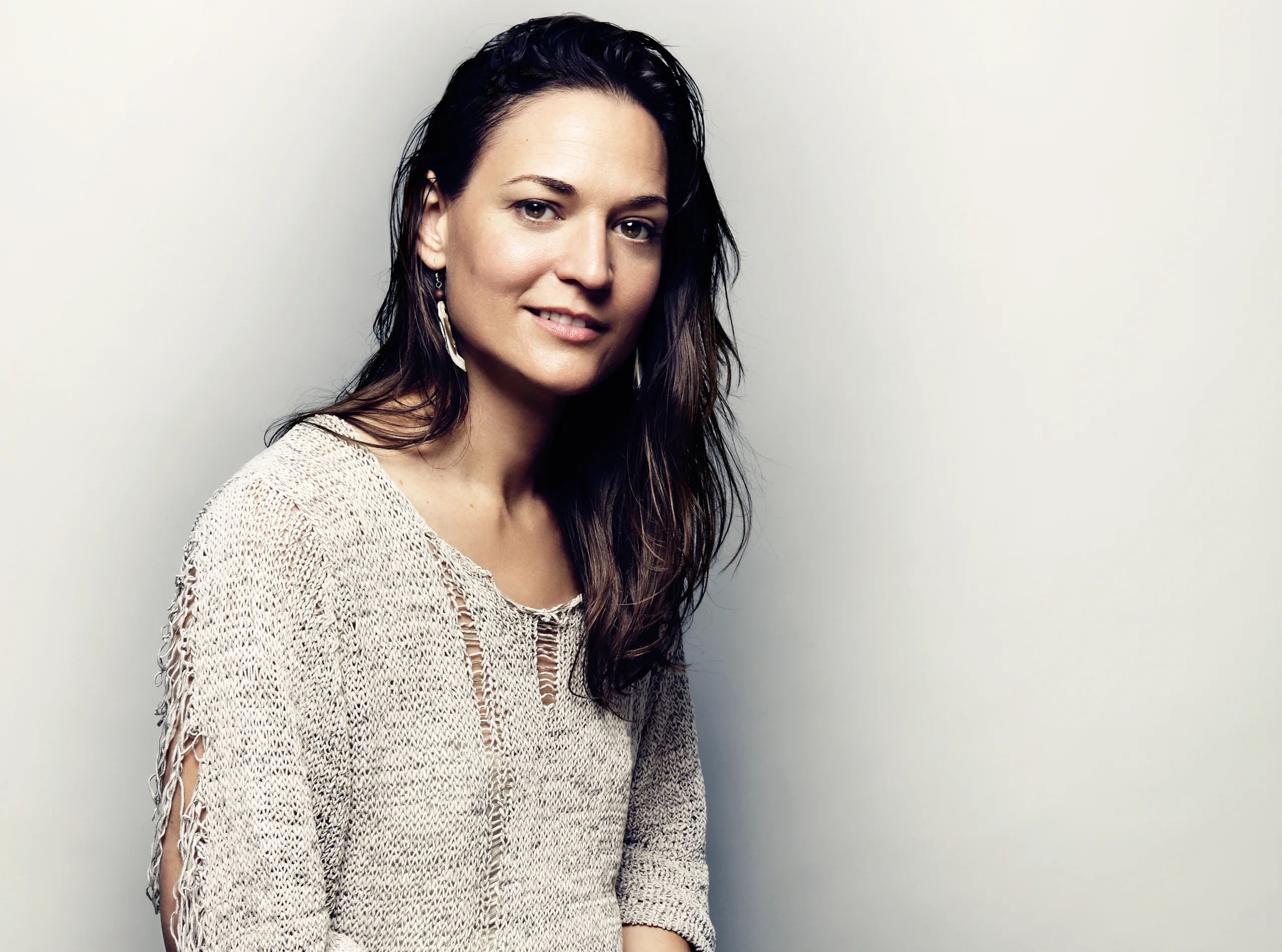The Napkin on My Lap by Kellie Wyllie

Crows dot the mulberry tree. I watch from my dining room as they shift and flutter from branch to branch to eat the tree’s burgundy berries. A hand-loomed cotton napkin on my lap reminds me of the more vibrantly coloured ones wrapped around cutlery in the dining rooms at Rancho La Puerta. The fabric’s simple lacy design gives the napkin texture and elegance. What is it about this small square of cloth, crafted so far away, that stirs me to reflect?
The first napkins were edible, writes journalist Ernie Smith. The Spartans in ancient Greece used a soft, spongy dough, apomagdalie, to clean their fingers and mouths. Later, the Romans introduced cloth napkins and by the second century the Chinese produced the first paper ones.
At mealtimes I would say to my two young children, “Napkins on your laps.” I told them that some day they might eat with kings and queens. “We’re all connected,” I said.
The English word napkin derives from the late fourteenth century. It’s a combination of Old French nappe, “tablecloth,” and Middle English kin, “little”—a little tablecloth.
Homer wrote that slaves held a basin under a pair of cupped hands while water was poured from an ewer. They dried with a mante’le. I imagine dinners where servers rushed back and forth to pass food, pour wine into cups and return empty dishes to kitchens redolent of olive oil, grilled lamb and honey. I hear the cacophony of clatter, scuffle of feet, laughter and conversation and understand how spun and woven threads do connect worlds and build relationships.
The Carthaginians carried their mappa to the table with them. They wove their napkins from coarse unbleached linen, while across the Mediterranean, the ancient Romans made napkins from fine linen laced with gold.
The dozen napkins I brought home from Mexico crease and crinkle at the edge after they’ve been laundered. When I smooth out the fabric and fold each one to place in a kitchen drawer, I think about the worlds that I’ve been linked to.
The Spanish say servilleta and the French say serviette. In Canada, because we are a bilingual country, we often interchange napkin with serviette—sometimes in the same breath.
The servilleta that rests on my lap here on Vancouver Island was woven in a village near Tecate. The weavers selected from an array of brightly coloured skeins of yarn. Solid bands of magenta, denim-blue and canary yellow are threaded through the loom’s reeds while contrasting colours are wrapped around the shuttle’s bobbins. I wonder who dyed the bundles of warps and wefts in vats of coloured liquid. Who threw the shuttles back and forth across a loom in the stony hills nearby? Did a woman or a man sit in front of the sewing machine that whirred zigzag lines along the edges of the napkins to prevent the cloth from fraying?
My napkins are woven from unbleached cotton. Canadians often gravitate to subdued colours because of our winter’s short days and long, cold nights. Magenta, teal-green and orange napkins seem discordant at my dinner table here on the West Coast where the mist drifts down from the mountains and hangs in the trees for days.
I remember once in the dining room at Rancho La Puerta, amongst the sounds of hungry guests and the aromas of roasted chilies, tortillas and beans from the kitchen, of a moment I reached for a napkin bundled around the lunchtime cutlery. A tidy blonde woman in front of me hesitated to choose between a yellow-and-blue napkin and a checkered red-and-white one. What did her decision evoke—confidence? Calmness? Creativity? Did anyone ever match her napkin choice to the tomato soup?
The technology of weaving fabric to wipe our lips and fingers after a glass of wine or a bowl of pasta is the same worldwide. Napkins, mappa, nappe, servilleta—it matters little what label we use to describe the cloth because language is only part of what connects us.
Outside my window the crows caw and shuffle as others join the mulberry feast. I notice that some of the birds swipe their stained beaks on bare branches.


